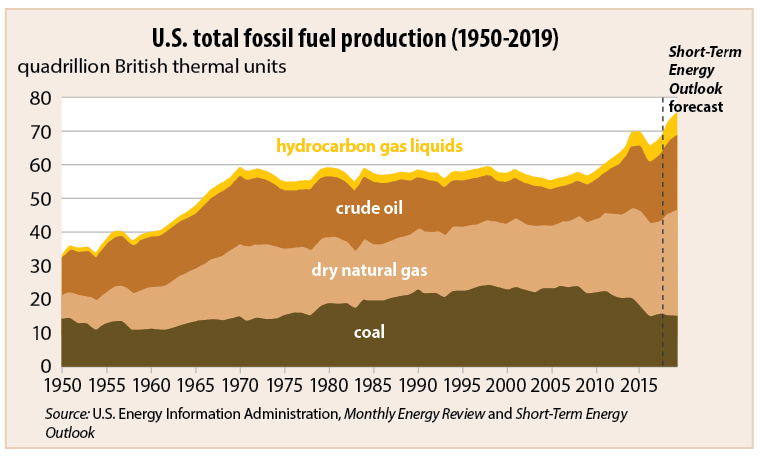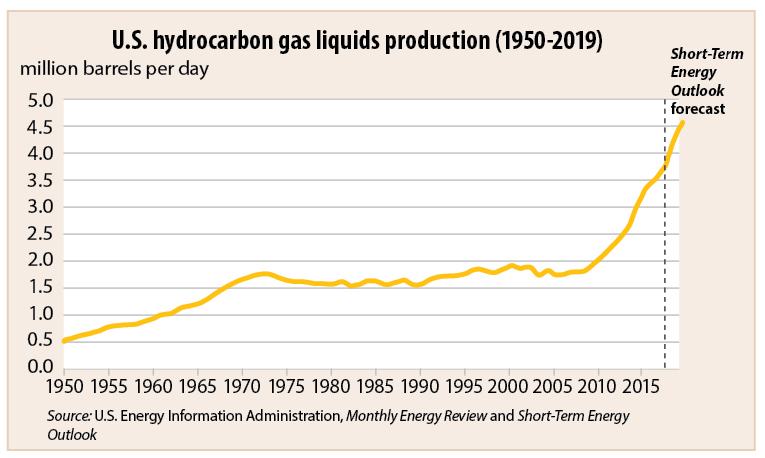EIA expects record fossil fuel production in 2018, 2019
The U.S. Energy Information Administration (EIA) forecasts total fossil fuel production in the United States will average almost 73 quadrillion British thermal units (Btu) in 2018 – the highest level of production on record.
EIA expects total fossil fuel production to then set another record in 2019, with production forecast to rise to 75 quadrillion Btu.
Btu expresses production in heat content, allowing for comparisons across fuel types.
Fossil fuels include dry natural gas, crude oil, coal and hydrocarbon gas liquids (HGL). HGLs include propane, butanes and ethane.

Crude oil and dry natural gas surpass coal as the leading sources of fossil fuel production. Click to enlarge.
Record production levels are largely attributable to increased production of natural gas and crude oil enabled by the use of hydraulic fracturing techniques in tight rock formations, reports the EIA. Additionally, EIA expects increases in natural gas production to be the leading contributor to overall fossil fuel production growth in 2018 and increases in crude oil production to be the leading contributor in 2019. In both years, expected growth in natural gas, crude oil and HGL production offsets expected declines in coal production.
On a heat-content basis, dry natural gas accounted for the largest share of fossil fuel production in 2017 at 41 percent. Crude oil accounted for 29 percent, coal for 23 percent and HGLs for the remaining 7 percent of the total. As recently as 2010, coal was the leading source of U.S. fossil fuel production, but it was surpassed by dry natural gas in 2011 and by crude oil in 2015, according to EIA.
In 2018, EIA forecasts dry natural gas production will average 80.4 billion cu. ft. per day (Bcf/d), an increase of 9 percent from 2017 levels. Additionally, EIA forecasts dry natural gas production will set another record with 83.0 Bcf/d in 2019.
EIA expects total U.S. crude oil production to average 10.3 million barrels per day (bpd) in 2018, up 10 percent from 2017. In 2019, EIA expects crude oil production to continue to increase, reaching an average of 10.8 million bpd.
EIA expects coal production will total 759 million short tons (MMst) in 2018, down 2 percent from 2017. Coal production is expected to fall to 741 MMst in 2019, a further 2 percent decline from 2018.
Growth in crude oil production, especially in the Permian Basin, is projected to increase associated natural gas production and contribute to growing HGL production at natural gas processing plants. EIA forecasts HGL production will average 4.2 million bpd in 2018 and 4.6 million bpd in 2019.

















